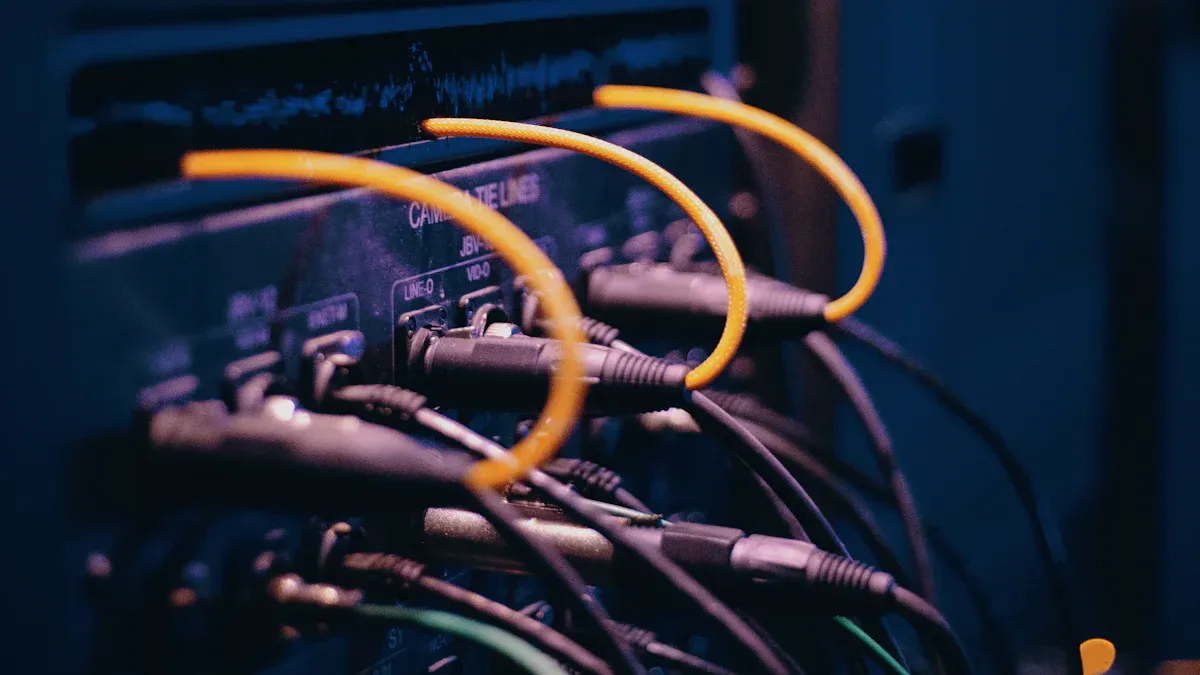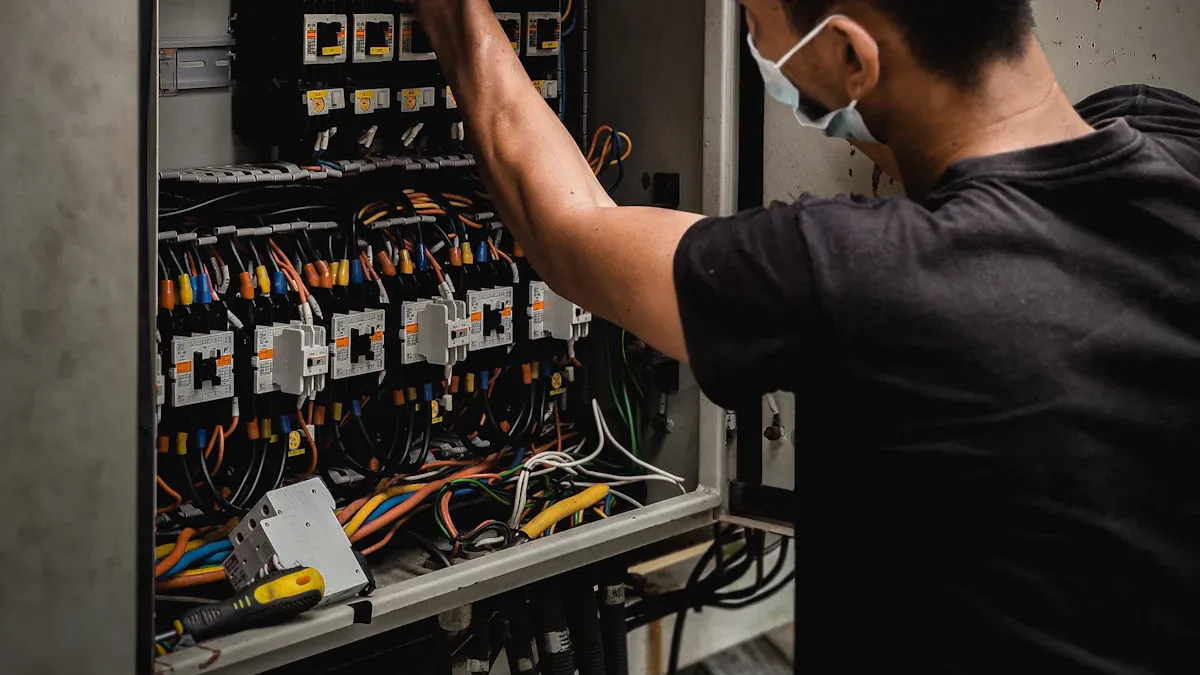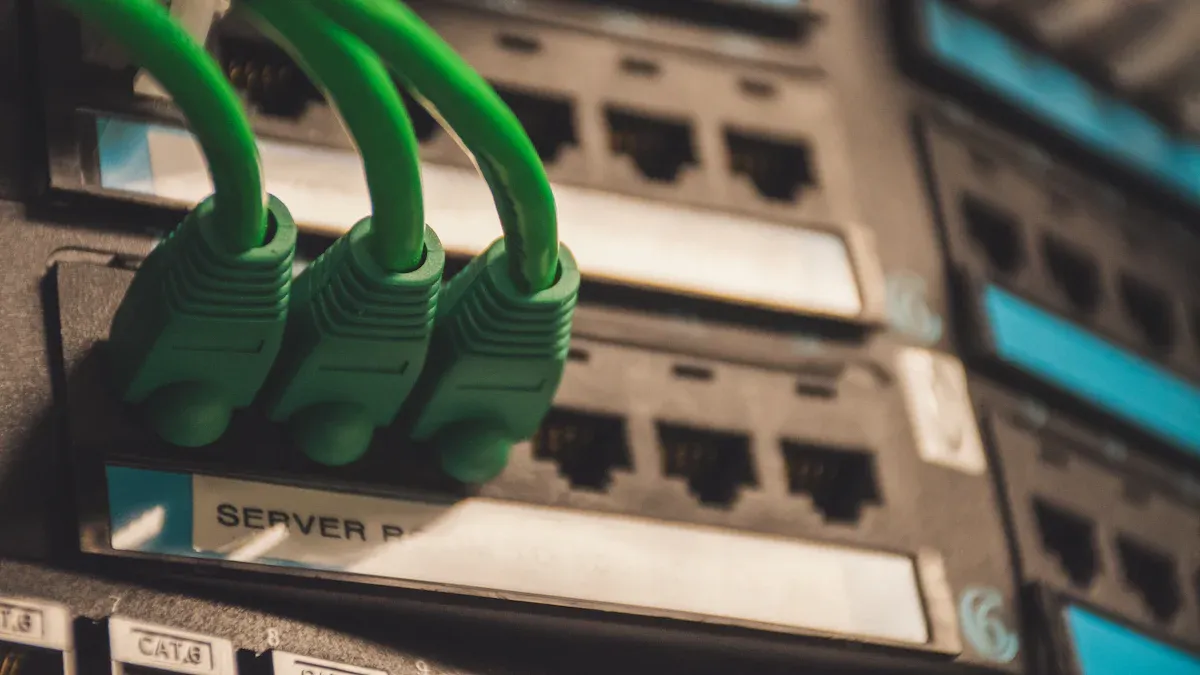High Reliability vs. Cost-Effectiveness: 4 Common Myths in Telecom Rectifier Module Selection (and How to Avoid Them)

You face tough choices when you select a rectifier module for telecom needs. Many believe smaller converters or fewer converters will save money, but this can cause energy waste, tvss issues, and even system failure. You often hear that energy efficiency in converters is less important, or that all converters work with any tvss. These myths can lead to wasted energy, tvss overload, and unreliable converters. You must understand how energy, tvss, and converters interact in your system to avoid costly errors.
Key Takeaways
Choose high-quality rectifier modules with proper certifications to ensure long-term reliability and lower maintenance costs.
Match the rectifier module size carefully to your system’s power needs to avoid overload, energy waste, and equipment damage.
Prioritize energy efficiency in converters to reduce heat, save electricity, and extend the lifespan of your telecom equipment.
Use certified and compatible converters with surge protection to prevent system failures and protect sensitive electronics.
Adopt modular designs and advanced monitoring tools for easy upgrades, better system control, and improved overall performance.
Cost vs. Reliability

Price and Rectifier Module Quality
You might think that choosing the cheapest rectifier module will save money, but this approach often leads to higher costs over time. Telecom operators look beyond the initial price. They consider the total cost of ownership, which includes operating and maintenance expenses. You need to focus on energy efficiency, as efficient converters reduce electricity bills and lower heat output. High-quality ac-dc rectifiers with low failure rates and long lifespans help you avoid frequent replacements and repairs.
Tip: Always check for quality assurance standards before making a decision. The table below shows some key certifications and what they mean for your system’s protection and reliability.
Quality Assurance Standards and Certifications | Purpose and Importance |
|---|---|
NEBS Level 3 | Ensures durability and reliability in harsh telecom environments. |
CSA/UL Recognition | Confirms compliance with North American safety standards. |
VDE Certification | Validates adherence to European electrical safety requirements. |
GR-3108 Compliance | Industry standard for telecom rectifier reliability and performance. |
CE Mark (Low Voltage Directive) | Indicates conformity with European safety and health regulations. |
You should also look for converters with modular designs. These allow you to scale your power system as your needs grow, making maintenance easier and more cost-effective. Advanced monitoring tools can help you spot issues early, preventing expensive failures and protecting your electronics from surge and tvss problems.
Evaluating True Reliability
Reliability in telecom converters means more than just running without failure. You need converters that handle varying power loads, environmental changes, and unexpected surge events like lightning. Operators often add extra capacity—about 20% more power than needed—to ensure stable operation and future growth. Efficient converters, often reaching 97% efficiency, help you save energy and keep electronics cool, which is vital for protection against power anomalies and surge.
You should measure reliability using several key metrics:
Mean Time Between Failure (MTBF): Most telecom rectifier modules last between 100,000 and 200,000 hours.
Durability: Converters must withstand high temperature, humidity, dust, and surge from lightning.
Maintenance: Modular designs and self-diagnostic features make it easier to maintain protection and avoid tvss overload.
Compatibility: Always check that your converters work with your existing electronics and tvss solutions.
Operators use advanced monitoring to manage converters remotely, reducing downtime and keeping critical systems online. By focusing on these factors, you ensure your power system delivers reliable energy, protects sensitive electronics, and avoids unexplained system shutdowns caused by surge or tvss failures.
Rectifier Module Sizing
Power Ratings and System Needs
Choosing the right rectifier module size is essential for reliable telecom operation. You must match the module’s power ratings to your system’s total load. In telecom systems, the power rating comes from multiplying the DC output voltage by the DC output current. Most telecom converters use 48V DC or 24V DC. You can find low power modules from 400W to 3000W, medium power up to 34kW, and high power up to 400kW. When you increase wattage at a fixed voltage, you also increase current, which means you need thicker cables. This careful matching helps you avoid wasted energy and keeps your electric power costs down.
Tip: Always check the voltage and current ratings of your converters. Make sure they fit your system’s peak and continuous load needs. This step helps you avoid overheating and energy loss.
You should also consider the type of converter. Single-phase rectifiers work well for low current needs, while three-phase rectifiers handle higher current, up to 35 amps or more. High efficiency modules, especially those using SiC or GaN technology, can reach over 99% efficiency. This reduces energy loss and keeps your electronics cool, which is important for protecting against power anomalies and tvss issues.
Risks of Undersized Modules
Many believe that smaller converters will save money, but this is a common myth. If you underestimate your peak loads, you risk overloading the rectifier. This can cause service interruptions, equipment failures, and even damage to critical systems. An undersized converter cannot handle sudden spikes in energy demand, leading to reduced reliability and a shorter lifespan for your equipment.
Underestimating peak loads can cause rectifier overload and system downtime.
Overloaded converters lead to service interruptions and failures.
Incorrect sizing reduces system reliability and shortens equipment life.
Using a checklist to verify ratings, load capacity, efficiency, and compliance helps you avoid these problems.
You should always test your converters under real load conditions. Check for stability, efficiency, and proper thermal management. Consult manufacturers for detailed product information, certifications, and support. This approach ensures your telecom system runs smoothly, saves energy, and protects your investment in electric power and electronics.
Efficiency Myths
Power Efficiency in Modern Modules
Many believe that efficiency in converters is just a bonus. You should know that efficiency is a requirement for reliable telecom systems. High efficiency means less energy wasted as heat and more energy delivered to your electronics. Modern converters use advanced semiconductor materials like GaN and SiC to reach efficiency levels of 97% to 98.5%. Some technologies, such as CoolGaN™, can even exceed 99% efficiency at partial loads. Bridge rectifiers offer the most efficient configuration for telecom applications.
Note: Efficient converters help you protect your electronics by reducing heat and lowering the risk of failure.
You can see how modern modules compare in the table below:
Feature/Statistic | Value/Description |
|---|---|
Efficiency of rectifier modules | Approximately 97% to 98.5% efficiency |
Advanced semiconductor materials | Use of GaN and SiC technologies enhancing efficiency |
Efficiency in modern models | Up to 97.8% to 98.5% efficiency |
Cooling and control techniques | Further improve efficiency and reliability |
Modern converters also use fan cooling and ribbed housing designs to manage heat. These features keep your electronics safe and reduce maintenance needs. Modular designs allow you to scale your power system and maintain high efficiency as your energy demands grow.
Impact on Long-Term Costs
You might think that efficiency only affects your electricity bill. In reality, high efficiency in converters brings major long-term savings. Efficient converters minimize energy loss during AC to DC conversion, which means less wasted energy and lower operational costs. Reduced heat generation lowers cooling requirements, saving you money on maintenance and equipment replacement.
High efficiency converters cut power loss by up to 75% compared to older models.
Lower operational temperatures extend the lifespan of your electronics and power systems.
Modular designs make upgrades and repairs easier, reducing downtime and maintenance costs.
Integration with renewable energy applications becomes more cost-effective with efficient converters.
Intelligent monitoring systems in modern converters let you track performance and predict maintenance needs. This proactive approach helps you avoid unexpected failures and ensures reliable power for your electronics. When you choose high efficiency converters, you invest in protection, sustainability, and long-term financial benefits for your telecom network.
Power Electronics Converters Compatibility

You might think all power electronics converters work the same way in telecom systems. This is a common myth. Each telecom setup has unique requirements for protection, energy, and surge handling. If you use incompatible converters, you risk unexplained system shutdowns, damaged electronic equipment, and poor energy conversion. You must check every detail before installation.
Standards and Certifications
You need to verify that your converters meet strict standards for protection and safety. Certified power electronics converters protect your electronics from surge, lightning, and voltage fluctuations. Look for certifications such as NEBS Level 3, CSA/UL, VDE, GR-3108, and the CE Mark. These standards ensure your converters provide reliable protection and stable energy for sensitive electronic equipment. IEC EN 62368-1 is now the main safety standard for telecom converters, replacing older rules. Certified converters include surge protective device features and advanced voltage surge suppression. Non-certified modules often lack proper protection, which can lead to overheating, unstable energy conversion, and increased risk of surge or lightning damage. You should always choose converters with proven protection and quality controls.
Tip: Certified converters reduce maintenance costs, improve uptime, and offer better protection for your electronics and tvss products.
Matching Modules to Telecom Systems
You must match your power electronics converters to your telecom system’s needs. Start by checking the total energy demand, including peak loads and backup systems. Make sure the converters’ voltage and current ratings fit your system. Pay attention to environmental factors like temperature, humidity, and dust, as these affect protection and energy conversion. Proper installation and modularity help you upgrade or replace converters easily.
Telecom systems often face electromagnetic compatibility (EMC) and electromagnetic interference (EMI) issues. Switching dc-dc converters can generate noise that affects modems, radio modules, and other electronics. This noise can cause timing errors, reduced signal quality, and even interfere with mobile phone bands. To avoid these problems, use good power converter design, proper PCB layout, and filtering. Add ceramic capacitors and ferrite beads to suppress high-frequency noise. Place converters away from sensitive electronics and tvss solutions to reduce EMI.
Modern SiC and GaN converters offer better energy conversion, higher efficiency, and improved protection against surge and lightning. SiC rectifiers handle higher voltages and temperatures, making them ideal for outdoor telecom installations. GaN converters provide fast switching and precise voltage control, which helps protect electronics and tvss from surge and lightning. These technologies also support compact designs, making installation easier in crowded telecom spaces.
Checklist for Compatibility:
Confirm total energy and surge requirements.
Match voltage and current ratings.
Check for protection features against lightning and surge.
Ensure compliance with all safety and EMC standards.
Use proper installation and modular converters for easy upgrades.
Verify compatibility with tvss, surge protective device, and other electronics.
By following these steps, you protect your telecom system from surge, lightning, and EMI. You also ensure stable energy conversion, reliable protection, and long-term performance for all electronics and tvss products.
You can avoid costly mistakes by matching rectifier module size, efficiency, and compatibility to your telecom system. Always select converters with the right power margin and advanced protection features. Consult technical documentation and industry standards to guide your choices and maintenance routines. Leading telecom operators rely on modular converters for scalability, reliability, and easy upgrades. Regularly review manufacturer guidelines and keep detailed maintenance logs. By choosing certified converters and following best practices, you ensure stable operation, lower costs, and long-term performance for your network.
FAQ
What happens if you use the wrong rectifier module size?
You risk unexplained system shutdowns and damaged electronic equipment. Undersized modules cannot handle peak loads. Oversized modules waste energy. Always match your module to your system’s needs for safe installation and reliable operation.
How do surge protective devices and tvss solutions protect telecom systems?
Surge protective devices and tvss solutions absorb voltage spikes. They prevent damage to sensitive electronic equipment. You should install these devices at key points in your power converter design to ensure voltage surge suppression and system stability.
Can you use any dc-dc converters in renewable energy applications?
No, you must select dc-dc converters that match your system’s voltage and current requirements. Proper power converter design ensures efficient energy transfer. This protects your electronics and supports reliable operation in renewable energy applications.
Why is voltage surge suppression important for telecom equipment?
Voltage surge suppression prevents sudden spikes from harming sensitive electronic equipment. Without it, you risk damaged electronic equipment and costly repairs. Always include surge protective devices and tvss products in your installation plan.
How do you ensure compatibility between rectifier modules and tvss products?
Check technical documentation for both the rectifier module and tvss products. Confirm voltage, current, and installation requirements. Proper compatibility prevents unexplained system shutdowns and protects your sensitive electronic equipment.
See Also
Steps To Guarantee Consistent Power In Telecom Cabinets
ESTEL’s Detailed Approach To Telecom Battery Risk Assessment
Reasons Lithium Batteries Excel Over Others In Telecom Cabinets
CALL US DIRECTLY
86-13752765943
3A-8, SHUIWAN 1979 SQUARE (PHASE II), NO.111, TAIZI ROAD,SHUIWAN COMMUNITY, ZHAOSHANG STREET, NANSHAN DISTRICT, SHENZHEN, GUANGDONG, CHINA

